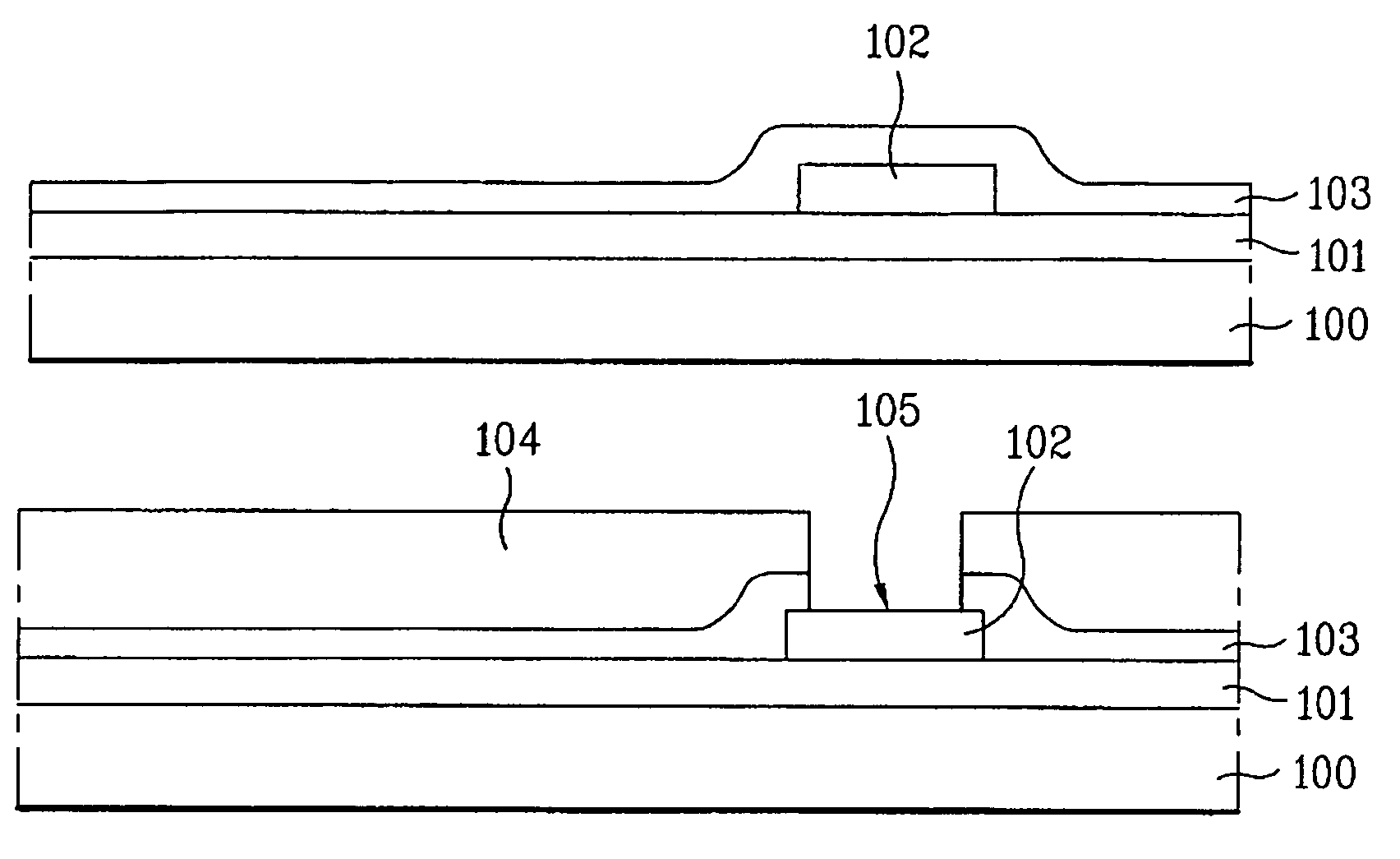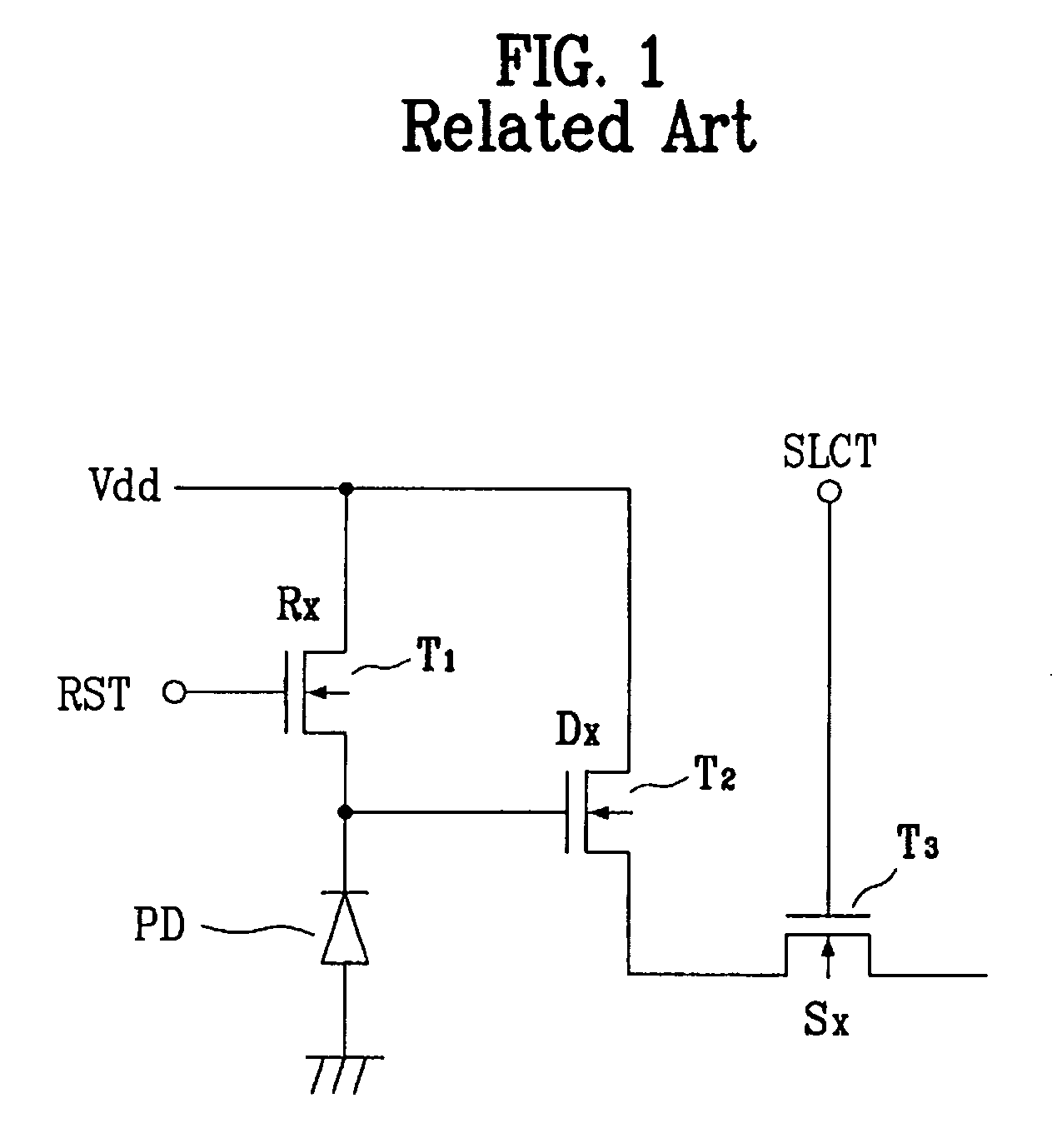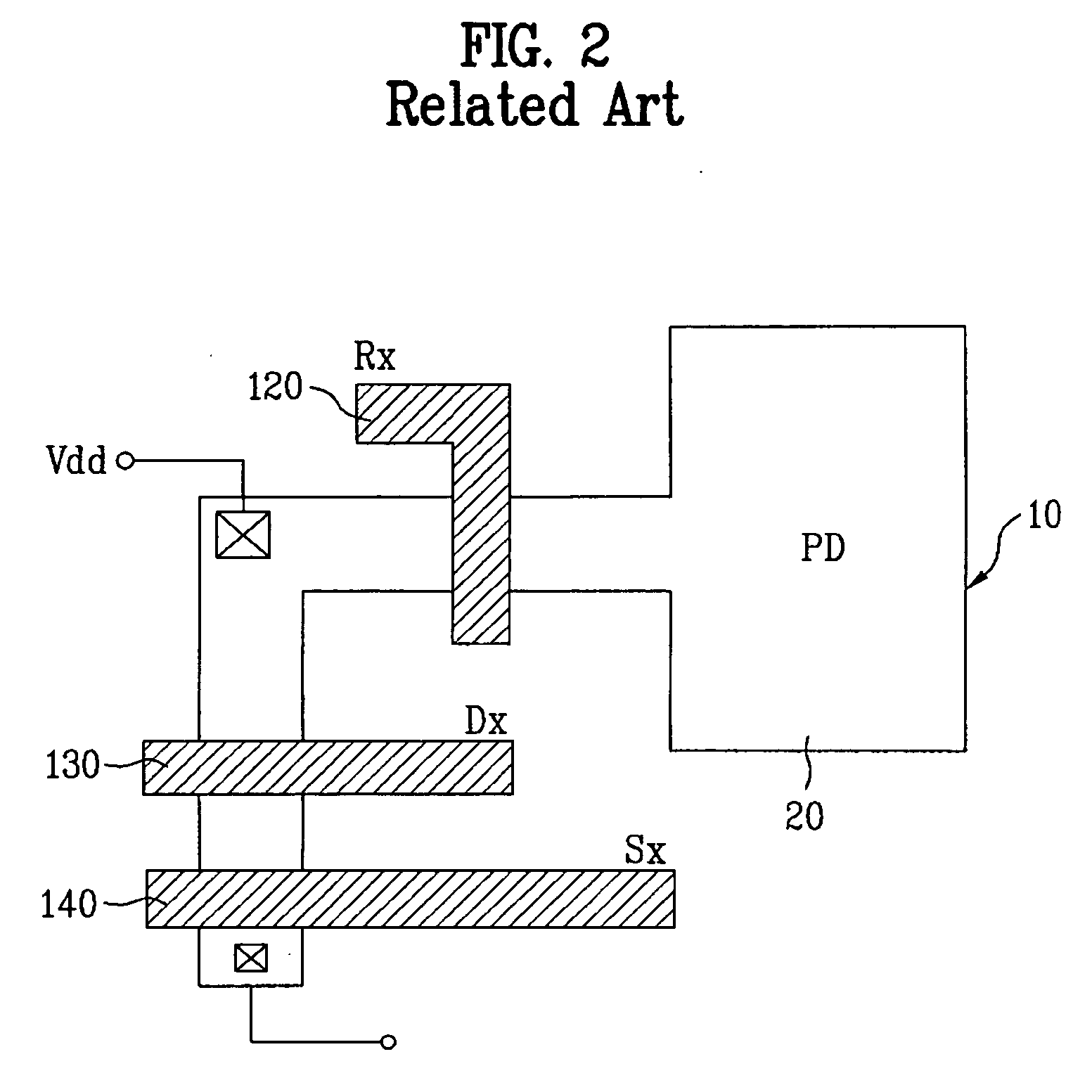Method for fabricating a CMOS image sensor
a technology of image sensor and metal oxide semiconductor, which is applied in the direction of semiconductor devices, diodes, radiation controlled devices, etc., can solve the problems of difficult control circuit, high power consumption, and difficult signal processing circuit, and achieve the effect of improving the performance and yield of the image sensor
- Summary
- Abstract
- Description
- Claims
- Application Information
AI Technical Summary
Benefits of technology
Problems solved by technology
Method used
Image
Examples
Embodiment Construction
[0055] Reference will now be made in detail to exemplary embodiments of the present invention, examples of which are illustrated in the accompanying drawings. Wherever possible, the same reference numbers will be used throughout the drawings to refer to the same or like parts.
[0056]FIG. 4A to FIG. 4G are sectional views illustrating a method for fabricating a CMOS image sensor according to the an exemplary embodiment of the present invention.
[0057] As shown in FIG. 4A, an insulating layer 101 such as a gate insulating layer or an interlayer insulating layer is formed on a semiconductor substrate 100. A metal pad 102 of each signal line is formed on the insulating layer 101. The metal pad 102 may be formed of the same material as that of respective gate electrodes 120, 130 and 140 shown in FIG. 2 on the same layer as the gate electrodes 120, 130 and 140. Alternatively, the metal pad 102 may be formed of a material different from that of the gate electrodes 120, 130 and 140 through ...
PUM
 Login to View More
Login to View More Abstract
Description
Claims
Application Information
 Login to View More
Login to View More - R&D
- Intellectual Property
- Life Sciences
- Materials
- Tech Scout
- Unparalleled Data Quality
- Higher Quality Content
- 60% Fewer Hallucinations
Browse by: Latest US Patents, China's latest patents, Technical Efficacy Thesaurus, Application Domain, Technology Topic, Popular Technical Reports.
© 2025 PatSnap. All rights reserved.Legal|Privacy policy|Modern Slavery Act Transparency Statement|Sitemap|About US| Contact US: help@patsnap.com



